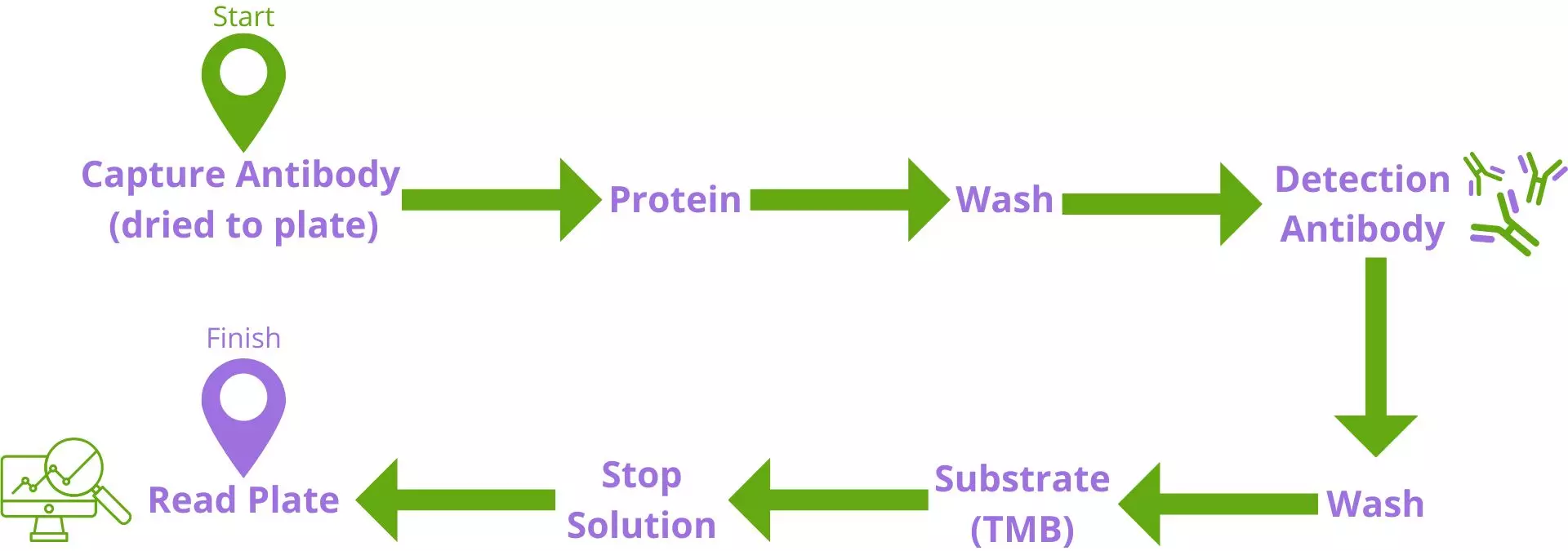You have no items in your shopping cart.
ELISA Kits: The Basics
What is an ELISA Kit?
ELISA (Enzyme-Linked Immunosorbent Assay) is an assay method used to detect and quantify the presence of soluble substances, often proteins, antibodies and hormones. .

ELISA Kit Flow Chart
ELISA Kit Step By Step Guide
- The ELISA plate will be delivered pre-treated with the capture (primary) antibody.
- The sample to be tested or the standard is added to the wells.
- The ELISA plate is washed, removing any unbound antigen from the sample or standard.
- The detection (secondary) antibody is added to the wells.
- The plate is washed again, removing any unbound secondary antibody to reduce the risk of any false positive results.
- The substrate (often TMB) is added to the plate. The strength of the fluorescence in each well is determined by the amount of bound antigen present in each of the wells.
- A ‘stop solution’ should be added in accordance with the instructions to halt the reaction of the substrate (commonly hydrogen chloride is used).
- The results of the ELISA test are then able to be read using a microplate reader.
Tips & Tricks
At Biorbyt, we have a wealth of experience and expertise in all aspects of ELISA testing as well as a host of other research techniques, reagents and their applications. We’ve put some of that together as a free resource, not only for our partners, but for all - click here to access it. Just one of the ways we’re giving back to the research community.
Find Out More
Check out Biorbyt’s exhaustive catalog of over 60,000 kits.
Alternatively, get in touch with our team if you have any questions or to learn more about how we can work with you to reach your research goals.

